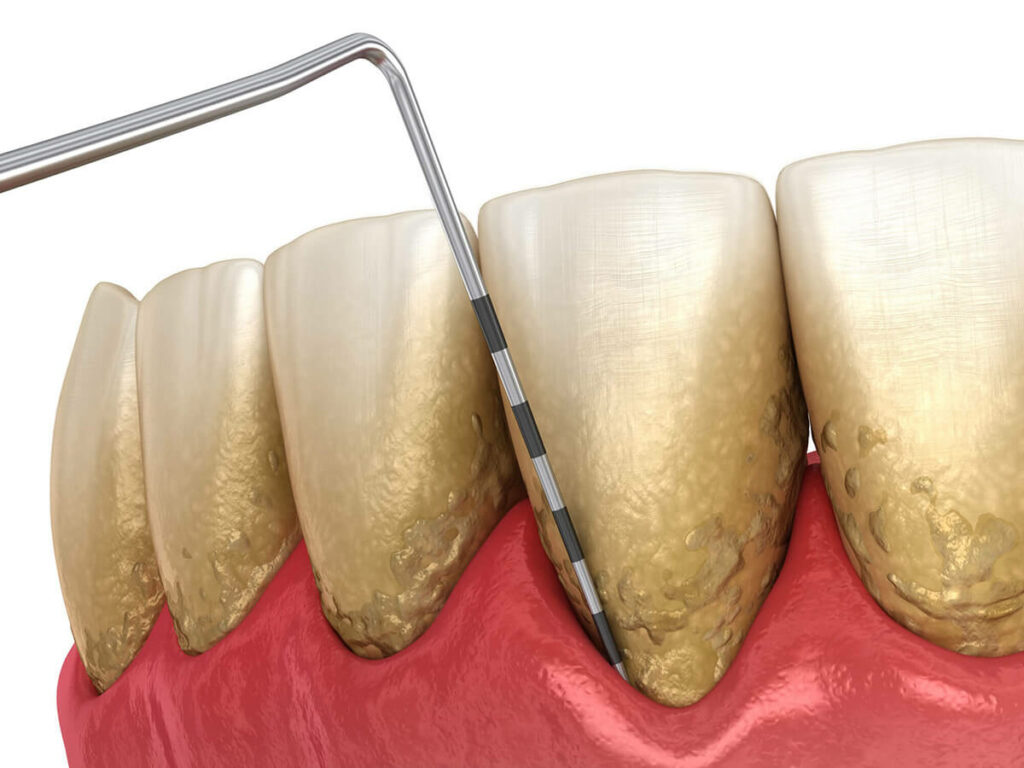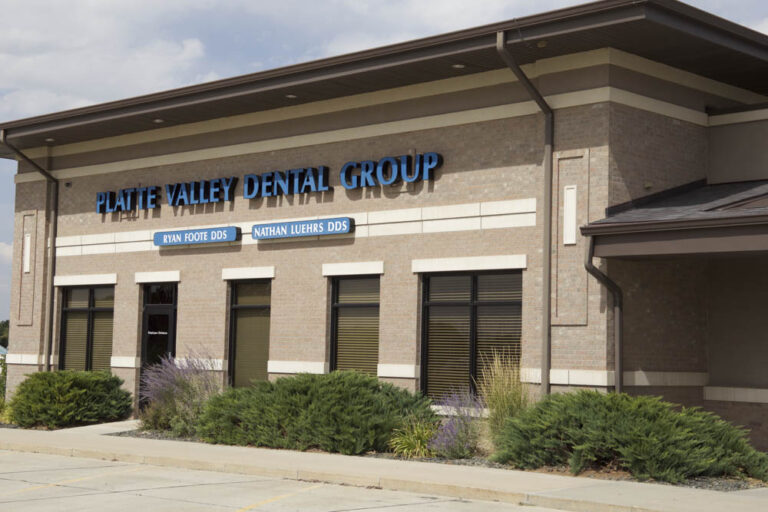Periodontal Disease Treatment (Gum Disease)
Protect your oral health with comprehensive gum disease treatment at Platte Valley Dental Group. Dr. Ryan Foote and Dr. Nathan Luehrs provide expert care to prevent and treat periodontal disease, ensuring your gums and teeth remain healthy.
Gum Disease Treatment in Scottsbluff, NE
Gum disease, also known as periodontal disease, can lead to serious oral health issues if left untreated. Our advanced treatments help manage and reverse the effects of gum disease, promoting healthier gums and preventing tooth loss. Schedule an appointment today to address any signs of gum disease and maintain your oral health.

-
What are the signs of periodontal disease or gum dissease?
Common signs of periodontal disease include red, swollen, or bleeding gums, persistent bad breath, receding gums, loose or shifting teeth, and discomfort while chewing. If you notice any of these symptoms, it’s important to schedule an appointment with Dr. Foote or Dr. Luehrs for a thorough evaluation.
-
How do you identify if gum disease is present?
To diagnose gum disease, Dr. Foote or Dr. Luehrs will perform a comprehensive examination of your gums and teeth. This involves several steps:
- Visual Examination: The dentist will visually inspect your gums for signs of redness, swelling, and bleeding. Healthy gums are firm and pink, while diseased gums may appear red and puffy.
- Probing: A dental probe will be used to measure the depth of the pockets between your teeth and gums. Healthy gum pockets are usually between 1-3 millimeters deep. Pockets deeper than this may indicate gum disease, with deeper pockets signifying more advanced stages.
- X-rays: Dental X-rays are taken to check for bone loss around the teeth, which is a sign of advanced periodontal disease. The X-rays help the dentist assess the extent of damage to the supporting bone structure.
- Assessment of Symptoms: The dentist will ask about any symptoms you’ve been experiencing, such as persistent bad breath, gum tenderness, or changes in your bite or tooth alignment. These symptoms can provide additional clues about the presence and severity of gum disease.
- Medical and Dental History: Reviewing your medical and dental history helps the dentist understand any underlying conditions or risk factors, such as diabetes, smoking, or a family history of gum disease, that may contribute to your condition.
These comprehensive assessments enable Dr. Foote and Dr. Luehrs to accurately diagnose gum disease and determine the appropriate course of treatment to restore your oral health.
-
How is periodontal disease or gum disease treated?
Treatment for periodontal disease depends on the severity of the condition. Early stages can often be managed with professional cleanings and improved oral hygiene practices.
More advanced cases may require scaling and root planing, a deep-cleaning procedure that removes plaque and tartar from below the gum line and smooths the tooth roots to promote healing. In severe cases, surgical treatments such as flap surgery or bone and tissue grafts may be necessary to restore gum health.
Dr. Foote and Dr. Luehrs will customize a treatment plan tailored to your specific needs.
More Questions?
If you have any questions about periodontal disease (gum disease) treatment please contact our office and we will be happy to answer any questions.

